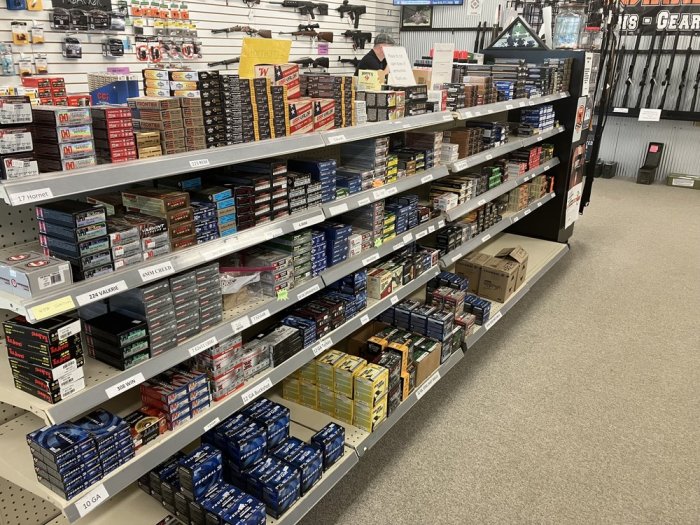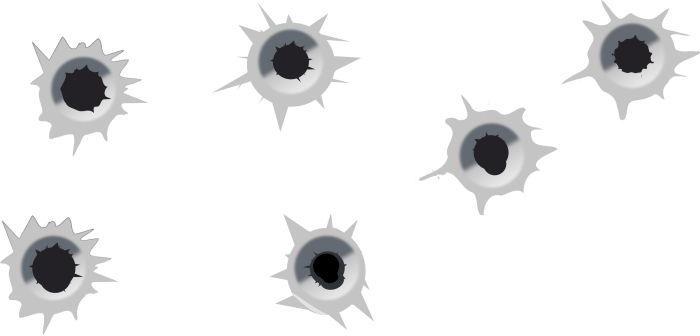Bullet hole firearms and training is a critical component of improving shooting accuracy and conducting thorough criminal investigations. Through the analysis of bullet holes, firearms experts can determine trajectory, identify firearm types, and provide valuable insights into crime scenes.
This comprehensive guide explores the significance of bullet hole analysis in firearms training, the various training programs available, and the advanced techniques employed in bullet hole forensics. By understanding these concepts, firearms professionals can enhance their skills, improve safety, and contribute to successful crime-solving efforts.
Bullet Hole Analysis in Firearms Training

Bullet hole analysis is a critical aspect of firearms training, enabling trainees to understand the trajectory of their shots and improve their accuracy. By analyzing the location and shape of bullet holes, instructors can provide valuable feedback to shooters, helping them refine their technique and develop consistent shot placement.
The methods used to analyze bullet holes involve examining the angle of entry, the size and shape of the hole, and the surrounding damage. By carefully observing these factors, instructors can determine the shooter’s position, the distance to the target, and the path of the bullet.
Example, Bullet hole firearms and training
In a firearms training session, a shooter consistently produces bullet holes that are high and to the left of the target. By analyzing the bullet holes, the instructor identifies that the shooter is gripping the firearm too tightly, causing the muzzle to rise during recoil.
The instructor then provides corrective guidance, helping the shooter adjust their grip and improve their shot placement.
Firearms Training for Bullet Hole Interpretation: Bullet Hole Firearms And Training

To effectively interpret bullet holes, it is essential to undergo proper firearms training. Various training programs are available, ranging from basic to advanced levels, catering to the needs of different shooters.
These training programs cover the fundamental principles of bullet hole analysis, including the methods for determining trajectory, understanding the effects of different firearms and ammunition, and interpreting bullet holes in various scenarios.
Key Skills and Techniques
- Determining the angle of entry and trajectory of the bullet
- Identifying the type and caliber of firearm used based on bullet hole characteristics
- Analyzing the surrounding damage to determine the distance to the target
- Interpreting bullet holes in different shooting scenarios, such as self-defense or law enforcement situations
Ballistics and Bullet Hole Forensics
Ballistics plays a significant role in bullet hole forensics, providing valuable information for criminal investigations. By analyzing bullet holes, forensic experts can determine the type and caliber of firearm used, the distance to the target, and the trajectory of the bullet.
The methods used in ballistics and bullet hole forensics involve examining the bullet’s shape, size, and markings, as well as the surrounding damage. This analysis allows experts to match the bullet to a specific firearm and identify the potential shooter.
Example, Bullet hole firearms and training
In a criminal investigation, a bullet hole is found at the scene of a crime. By analyzing the bullet hole, forensic experts determine that it was fired from a 9mm pistol at a distance of approximately 10 meters. This information helps investigators narrow down the potential suspects and identify the weapon used in the crime.
Advanced Techniques in Bullet Hole Analysis

In recent years, advanced techniques have emerged to enhance the accuracy and efficiency of bullet hole analysis. These techniques include:
- 3D Scanning:Using 3D scanners to create detailed models of bullet holes, providing precise measurements and enabling virtual reconstruction of the shooting scene.
- Photogrammetry:Employing multiple photographs to generate 3D models of bullet holes, allowing for accurate measurements and analysis of the surrounding damage.
These advanced techniques have significantly improved the capabilities of firearms instructors and forensic experts in analyzing bullet holes, leading to more precise and reliable results.
Case Studies and Applications
Bullet hole analysis has a wide range of applications in firearms training and forensics, as evidenced by numerous case studies and real-world examples.
- Firearms Training:Bullet hole analysis has been instrumental in improving the accuracy and consistency of shooters in various firearms training programs, including law enforcement, military, and civilian training.
- Forensic Investigations:Bullet hole analysis has played a crucial role in solving crimes, identifying suspects, and reconstructing shooting scenes. It has been used in high-profile cases involving murder, terrorism, and mass shootings.
The success stories of bullet hole analysis highlight its importance as a valuable tool in firearms training and forensics, contributing to improved safety, accuracy, and justice.
FAQ Overview
What are the benefits of bullet hole analysis in firearms training?
Bullet hole analysis in firearms training helps improve shooting accuracy by providing insights into trajectory, recoil management, and firearm performance.
What types of firearms training are available for bullet hole interpretation?
Firearms training programs for bullet hole interpretation include basic marksmanship courses, advanced shooting techniques, and specialized training for law enforcement and forensic professionals.
How does ballistics contribute to bullet hole forensics?
Ballistics provides information about the firearm used, including its caliber, type, and firing distance, based on the analysis of bullet holes and cartridge casings.